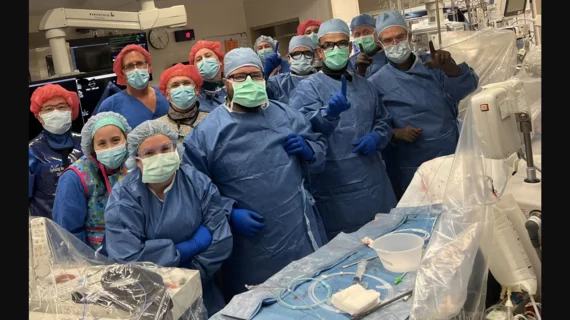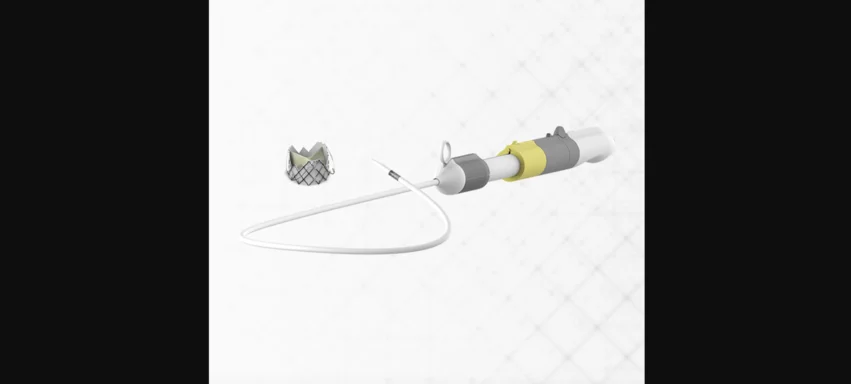New TAVR valve for native aortic regurgitation linked to positive 30-day outcomes
A new transcatheter aortic valve replacement (TAVR) valve designed to treat severe symptomatic aortic regurgitation (AR) is associated with positive outcomes and “excellent” hemodynamic data after 30 days, according to an early feasibility study (EFS) published in JACC: Cardiovascular Interventions.[1]
“Surgical aortic valve replacement is the only therapy recommended in societal guidelines to address AR,” wrote first author Santiago Garcia, MD, an interventional cardiologist with The Christ Hospital in Cincinnati, Ohio, and colleagues. “However, undertreatment is common and is associated with high risk for mortality, which highlights the need for less invasive alternatives to surgery. Percutaneous treatment of AR with commercially available transcatheter heart valves is limited by anatomical factors including a lack of annular calcium and a large aortic annulus, leading to suboptimal clinical results.”
The J-Valve manufactured by JC Medical, a Genesis MedTech company, includes a self-expanding nitinol frame, bovine pericardial leaflets and three anchor rings designed to assist operators with alignment. Its delivery system was built with transfemoral access in mind, and JC Medical plans to offer the valve in five different sizes.
Garcia et al. explored the valve’s potential in 15 high-risk patients—11 men and 4 women—with a mean age of 80 years old, mean Society of Thoracic Surgeons score of 5.5% and mean ejection fraction of 54%. The median procedure duration was 53 minutes and median fluoroscopy time was 22 minutes. Four different sizes of the new valve were used: 25 mm, 28 mm, 31 mm and 34 mm.
Overall, the team observed, no instances of intraprocedural mortality, coronary obstruction or device embolization/migration were required. No patients needed a second transcatheter heart valve. All procedures were a success except one, which required a conversion to surgical aortic valve replacement because of an “inability to release the anchor rings after a successful valve deployment, secondary to extreme tortuosity of the aorta.”
After 30 days, no cardiovascular deaths, strokes or device-related interventions were reported. No patients required a new permanent pacemaker. One patient did die from noncardiovascular causes after discharge. The 30-day mean effective orifice area was 2.9 cm2 and 30-day mean transvalvular gradient was 5.5 mmHg. All patients had no, or only trace residual, AR.
The researchers noted that the J-Valve device showed potential as a treatment option for patients with large aortic annuli, a group that was not included in a recent assessment of the JenaValve Trilogy Heart Valve System. Effective treatment for these patients remains an “unmet clinical need.”
“In conclusion, the EFS of the J-Valve for the treatment of native AR demonstrated favorable procedural outcomes and excellent hemodynamic status at 30 days,” the authors wrote.
Click here to read the full study in JACC: Cardiovascular Interventions, an American College of Cardiology journal. Co-authors included some of interventional cardiology’s most well-known figures, including Michael Reardon, MD, Rebecca T. Hahn, MD, Joao Cavalcante, MD, and others.


